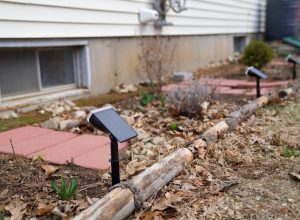It is critical to understand more about container security, especially in 2020. There are more security breaches and information leaks more than ever before. In the last five years, several enterprise companies have fallen prey to online attacks. These enterprise companies include Canva, LinkedIn, and Equifax.
No company is safe. And if you’re in the space of tech and software development, you are at even higher risk. The rise in container registry usage makes container security essential.
Let’s take a closer look at what container security is, and the top three container security best practices to integrate in 2020.
What Is Container Security Exactly?
Container security is as it is advertised, security for containers. But it goes beyond simply security. For instance, the protection and the integrity of containers is a priority. This goes for the actual applications to the infrastructure behind them. To ensure container security is maximized, security best practices must be integrated and ongoing.
Container security for enterprise companies, for example, involves securing the application and container pipeline, integration with other security tools, and securing container deployment and as mentioned prior, securing the infrastructure.
When you integrate container security into your pipeline and infrastructure, your company’s containers become trusted, reliable, and trusted.
1. Compile Container Files And Protect Base Images
Containers are essentially layers of files, but container files are often called container images. Within these images is a base image that is the first image in the container. This base image is one of the most important assets to secure when it comes to container security best practices.
The base image is the image for all other images within the container. Thus giving it massive importance. How do you secure the base image to enhance the overall security of the container? Identify all trusted sources for that image.
A few key questions to ask when compiling your container images and their trusted sources include:
- What will be the schedule for updating the containers?
- Are the images all from trusted sources?
- Are the container images signed?
- Is there already an identified issue with the container?
- How will my company manage and track container issues?
2. Develop Container Management Security Best Practices
This is another top container security best practice to integrate in 2020. When you have all images, you’ll need to set up management best practices for those images. This includes access and promotion of images within the team and across departments.
How can you set up security-minded image management? Private registries are a great way to make management and access of images a top priority. This is because the registry assigns metadata to each container. The metadata serves up key data in order to identify any container weaknesses.
Before you set up container access management, you’ll need to consider a few key questions to get moving in a security-minded direction. Is metadata already existing in order to identify and track problems? What role-based access is available to manage the containers?
3. Create Automated Deployment With High-Level Security Testing Measures
Deployment is a critical step in the container pipeline. This makes it a very important place to integrate container security best practices. For instance, each build will need a high-level management that encompasses the standards set by the industry. This can be challenging, but the solution is automation.
Creating and implementing automation into builds in order to identify and flag container security problems is key. This is especially important over time, as new security problems are identified and tracked. This allows you and your team to avoid rebuilds, because a solution to a problem caught early can be patched.
An automated component analysis can do the trick. This integrated tool can identify problems while automating policy-based deployment. To integrate this container security best practice, you need to ask how to exactly utilize automated processes to rebuild and replace containers.
Are You Integrating Container Security Best Practices Into Your 2020 Container Builds And Pipelines?
The digital age and all the innovation enterprise companies have access to is pretty amazing. However, these innovations have led to a number of security problems. Remember, the data and information of your company and those you serve needs to be a top priority. Do not think that your company is immune to security problems. Even top global enterprise companies fall prey to security breaches. To protect your company, integrate container security best practices in 2020. How are you making container security a top priority? We want to hear from you.
Disclosure: We might earn commission from qualifying purchases. The commission help keep the rest of my content free, so thank you!



